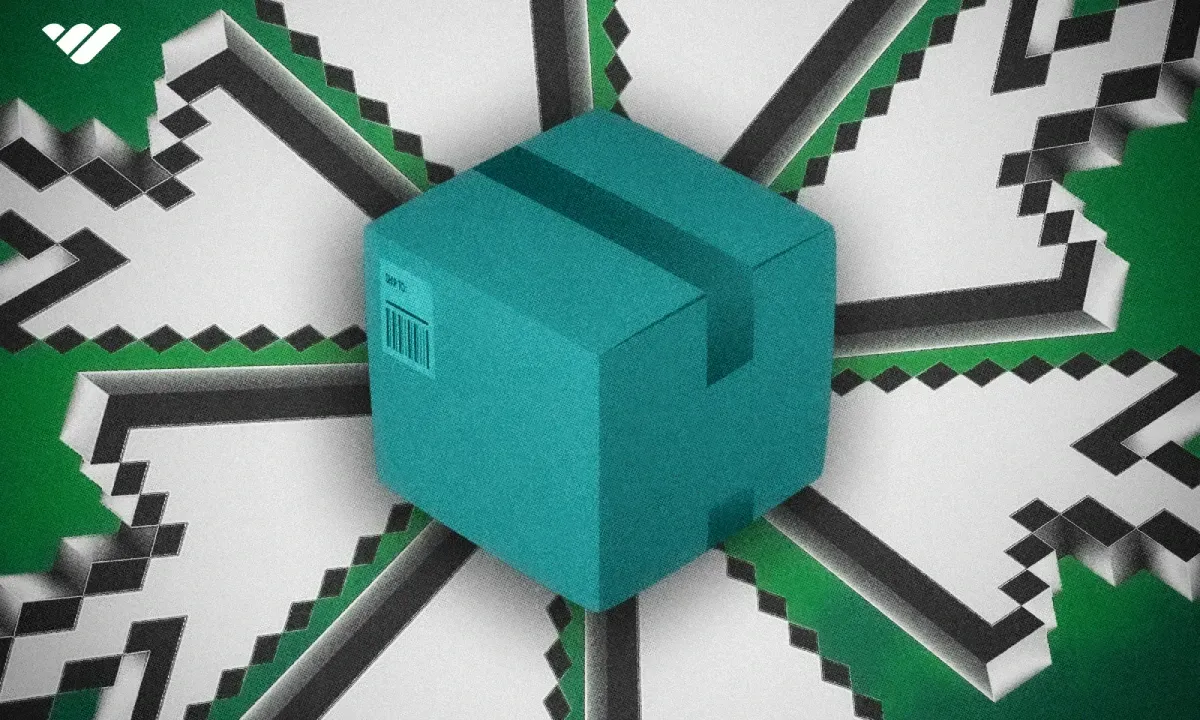Flipping means reselling items for profit, and it can be either a great side hustle or a full-time business. Discover all you need to know about flipping and how it works in this guide.
Key takeaways
- Flipping requires buying items at low prices and selling them for higher profits.
- Flipping has extremely low barriers to entry and zero upfront costs in some cases.
- Successful flippers can earn identical effort profits from $20 Timex to $2000 Rolex sales.
- Market research helps identify price gaps between different selling platforms for profit opportunities.
- Excellent customer service and fast shipping build repeat customers for higher-ticket item sales.
If you want to profit in today’s gig economy, where both side hustles and entrepreneurial ventures are gaining appeal, you should consider learning the art of flipping items for profit.
Not only does flipping have one of the lowest barriers to entry for any business model, it also provides numerous benefits and its methodology can be applied to various industries.
Let’s check out what flipping is and how you can get started today, including examples and steps.
What is flipping?

Flipping is buying an item for a low price and selling it for a higher profit. You can flip anything from sneakers to furniture, jewelry to digital products.
Thanks to the free market, anyone can become a flipper and make a side hustle or a living from reselling.
A flipper acts like a matchmaker between buyers and sellers. They often track down highly sought-after items and deliver them to buyers who might not have found them on their own.
Benefits of flipping
Flipping's main benefits are its low barriers to entry, flexibility, and earning potential:
Low barriers to entry:
Getting started as a flipper is as simple as finding an item and then finding a buyer for it.
With so many online platforms full of active buyers, you can create an account for free, list an item, and reach your audience in minutes. You can even start flipping with zero upfront cost if you snag something that’s being given away for free.
Diverse selection of niches:
As long as it’s legal and safe for consumer use, you can flip anything.
This means you can flip things that align with your current hobbies and interests, making it a rewarding hustle, both personally and financially.
Obviously, some markets are hotter and more profitable than others, so you should balance your interests with market demand – but this is usually pretty natural i.e, sneakers, vintage bags, or trading cards.
High degree of autonomy and flexible schedule:
Working as your own boss and working from home almost entirely online are characteristics of a dream gig for pretty much anyone, and flipping checks these boxes and more.
Online marketplaces are like having a storefront that runs 24/7, so you can list and sell an item at any time of day.
The only schedule you’ll need to keep in mind is that of your local post office, but other than that, everything is on your terms, including what you want to buy and where you want to do business, which can be in person as well as online.
High profit potential:
One of the best things about flipping? You don’t always need to work harder to make more money.
For example, flipping a Timex might earn you $10–20, while a Rolex could net $1,000–2,000, and the effort is basically the same: listing, packing, and shipping.
It might take a while to work your way up to pricier items, but starting with that goal in mind lets you reinvest profits and eventually snowball your earnings into something much bigger.
Transferable skills:
Flipping is easy to start, and the skills you grow can be applied to other business ventures if you choose.
Successful flipping requires thorough research of different markets and platforms, understanding buyer psychology, gaining an edge against competition, and delivering excellent customer service to encourage loyalty and repeat business.
All of these skills are useful in any business environment.
How to flip items and actually make profit: 5 steps

To flip items for profit, you need to understand both sides of the game: buying and selling.
Start by learning the market from both perspectives. Look for price gaps and figure out how to join the group of savvy buyers who consistently score items at the lowest prices.
Once you’ve secured a good deal, list the item on an active marketplace.
Over time, you’ll get a feel for how hard it is to find specific items, how often you can find them at a bargain, and how fast they sell.
Here are five ways to make this process easier:
1. Market research
Figure out your flipping niche, and start studying the market.
You can gain a good level of understanding by looking across popular marketplaces for the top items in terms of sales volume, profitability, price, and rarity.
If you’re targeting baseball cards, head to eBay and scroll through for specific cards, niches, or players that have high popularity.
Make lists of items that you want to target, and then continue to source the inventory.
2. Source and prep your inventory
Once you've found an item worth reselling, search for it again on a different platform.
If you see a price discrepancy and consistent sales, this can be a great first item to target and flip.
Always buy your product at the lowest end of the market range so you can sell it for the highest fair market price.
Sometimes, you’ll sell items in the same condition as they were when you bought them, and other times, you’ll need to prep inventory in order to make a profit.
For example, some flippers might buy phones with broken screens and then fix them to flip for a profit.
3. List your product
Before listing your product, perform market research so that you know which marketplace is the hottest and most profitable for your item.
Sometimes, this means selling on a marketplace that is specific to your niche, like GOAT for reselling sneakers, or Chrono24 for a nice watch.
Get familiar with the top reselling marketplaces, including the broader giants like Amazon and eBay, in addition to those that cater specifically to your niche.
Be sure to keep in mind any platform rules, requirements, fees and seller reputation.
In the beginning, you can list on several marketplaces before settling on one that is best for you.
4. Market your goods
You can't flip anything if you don't know how to find buyers.
Here’s how to do it:
- List on the right marketplace: Research where buyers are actively looking for items like yours and post there.
- Price strategically: Use demand, rarity, and competition to set a price that maximizes profit without scaring buyers away.
- Use urgency and scarcity: Limited-time offers, “only one available,” or trending items can push buyers to act fast.
- Use free marketing methods: Create organic social media content and funnel audiences through a link in bio to a storefront.
- Promote where your audience hangs out: Share your listings in online groups, forums, or Discord servers relevant to the product niche.
One of the main reasons flippers sell items for high profit is because of their marketing. Even if an item is overlooked in a quiet marketplace, marketing can make it sell quickly, and for top price.
5. Fulfillment and customer service
The final (and arguably most important) step to becoming a top flipper is nailing fulfillment and customer service.
The most important thing is to ship items quickly and safely, and make the buyer feel like a VIP the whole way.
So, take care with packaging – even adding a personal touch like thank-you cards or stickers can make you memorable.
Also, stay on top of communication, answering questions and concerns promptly.
Good fulfillment and customer service earn repeat customers and prepare you to sell higher-ticket items, where buyers expect a higher standard.
What’s the difference between flipping and reselling?

Flipping means getting items for free or buying low and trading up – making it a more flexible and potentially rewarding strategy.
Basically, all reselling counts as flipping, but not all flipping is reselling.
A famous example is that guy who turned a paperclip into a house just by trading — no money needed, no traditional reselling involved. Wild.
Flipping also usually focuses on moving items quickly, while reselling can be slower and more conventional.
Both fall under the umbrella of retail arbitrage, which you can learn more about in our retail arbitrage guide.
Best items to flip for profit
Here are some specific items that you can flip for profit, in addition to a brief description of the market and some actionable advice on how to participate:
Furniture:
Furniture has great flipping potential, as you can often find furniture cheaply or free and easily fix it up for a higher resale value.
You’ll just need a large truck to transport the items and a few DIY tools like sanders, paint, or varnish.
Cars and vehicles:
There is always a steady demand for affordable used vehicles, which makes the car flipping market both active and potentially lucrative.
The best strategy is to find someone who wants to sell a decent car quickly for monetary reasons or because their car requires a simple fix that they don’t want to address.
It's best to focus on popular models that are known for value and reliability.
Watches and jewelry:
Watches and jewelry are great items to flip – they have big profit potential yet are easy to store and ship.
Before entering the market, you’ll want to develop an understanding of the best and most reliable brands, the risk of running across fakes, and where and how to source and sell.
You can start flipping watches and jewelry with as little or as much money as you want, too. There's a highly active market, from budget-friendly pieces all the way up to five or even six figures.
Electronics and gadgets:
The market for electronics covers a vast landscape ranging from the latest tech to nostalgic relics, so there is a diverse and steady supply for you to choose from if you want to flip them.
Focus on popular items such as smartphones, gaming consoles, laptops and sought-after vintage devices.
You’ll also want to fully assess the current condition of your item and accurately describe it for buyers.
Vintage clothing and deadstock:
Vintage clothing and deadstock are both hot flipping markets.
Vintage appeals to shoppers seeking unique, pre-loved fashion and sustainable choices, while deadstock refers to brand-new, unworn items that are no longer sold by the original retailer, like limited-edition sneakers or streetwear.
Browse Instagram style accounts and check thrift shops, then source undervalued vintage gems or rare deadstock from thrift stores, garage sales, or online marketplaces.
Real estate:
For those with the budget, knowledge, and interest, flipping real estate is probably the most lucrative niche.
While this takes a good deal of due diligence, knowledge, and investment, the reward can be worth it as the paydays can be six figures or more.
You’ll have to develop an understanding of regional markets, constantly be on the lookout for undervalued properties, and develop a network of reliable contractors and vendors for renovations to make your property more valuable when you list it on the market for a profitable flip.
Another strategy that you can learn is real estate wholesaling, which requires little to no upfront investment and no ownership, making it much faster than traditional strategies for real estate flipping.
Find the hottest items to flip with Whop’s reselling communities
All reselling counts as flipping, but not all flipping is reselling. Flipping can include getting items for free or trading up, making it a more flexible and potentially rewarding strategy. A famous example is the guy who turned a paperclip into a house just by trading — no money needed, no traditional reselling involved.
If you’re ready to start your flipping hustle, joining a community is the secret to levelling up fast.
Flipping looks simple on the surface, but actually finding deals, reading the market, and knowing where to sell takes strategy – and mistakes can get expensive.
Being part of a group of experienced flippers gives you insider tips, sourcing hacks, and proven strategies, helping you turn a profit from reselling sooner.
Join Whop and find private, expert-led flipping and reselling groups where people are actually cashing in, so that you can too.
Flipping FAQs
What is the best way to start flipping?
The best way to start flipping is to think of everything that you’ve purchased in the past month, and see if you bought any of those items from a reseller.
Do price research and find out how and where to get that or a similar item for cheaper, and then list and sell it.
This is the best way to get started because you’ll be dealing in a niche that you are already familiar with.
Plus, if anything goes wrong, you won’t lose because you can keep an item that you like anyway.
How risky is flipping?
Flipping is generally low-risk, but it’s not without pitfalls.
You could sell an item for less than you paid, fall victim to scams, or lose money and space storing inventory that doesn’t sell.
The best way to reduce risk is to stick to active, profitable markets you’ve researched, and stay alert for common red flags like shady sellers or deals that seem too good to be true.
How much money do I need to flip?
You can start flipping with as little or as much money as you want.
You can even start flipping for nothing by checking out the free section of your local classifieds – or even digging through your house for unused items with resale value.
What are the best items to flip?
The best items to flip are those with an active and freely priced secondary market – like clothing, furniture, and electronics.
The more active a market is and the higher the volatility in pricing, the better the profits are for items within it.
Also consider your level of interest and expertise with a market niche – things you know well about will give you an edge over other sellers, making these the best items for you.



